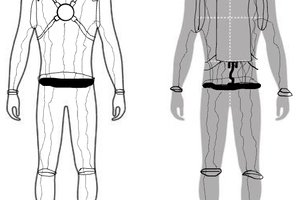I've been judging Hackaday contests since early 2017; not as one of the celebrity judges but as a community member brought in to help with the crushing number of entries every year. Keep in mind this is my personal opinion, and these are not the official Hackaday judging guidelines or anything like that. Each judge will look for different things, but I wanted to share what I look for in hopes of encouraging more people to start entering projects, and knowing what judges generally look for. I've gotten (I like to think) pretty good at being able to size up a project in about 30 seconds. I can tell right away whether I am going to need to spend time reading and analyzing all their content and code, or whether to disqualify them right away.
That second choice -- immediate disqualification -- happens so often it's starting to become routine. Why do projects get disqualified or get low scores? Here's the top reasons:
- Incomplete page/project
- Seriously, finish your project if you're going to enter! At least make an attempt to have a working prototype before the deadline. Nothing gets the point across like a working example.
- No photos/video
- This will lose you a lot of points. We want to see your project, not just read about it! Projects with many photos and videos are excellent. A picture is worth a thousand words, but a video is worth a million!
- Theory or description only
- This sort of falls into the incomplete project category, but so many entries are just theoretical projects that they want to make, or a brief description of an idea. Don't enter something that isn't an actual project you've created!
- The same project over and over
- We don't need another personal assistant robot. We don't need another quadcopter flight controller. We don't need another home automation controller (no matter how much electricity you think it will save). We don't need another weather station. These projects are absolutely fun and educational to build, but don't enter them into the contest -- you are extremely unlikely to have differentiated your version enough to get past even a cursory inspection. If you've had a revolutionary new approach, or completely turned the idea on its head -- then definitely enter it. But if it's yet another x, then think carefully.
- Project stuffing
- This really, really angers me. A certain small number of people think quantity over quality will get them a spot on the podium. Some people submit 5, 10, 20, even 30 or more projects that are either very basic variations of the same thing, or they simply submit every single project they have on their Hackaday.io profile, even if they have absolutely nothing to do with the contest. If you do this, know that every time we open a project page and see your name as the author, we're going to let out a sigh and look upon it disfavourably, no matter how good the project might be. Don't stuff projects! It wastes everyone's time and simply will not work.
- Too much advertising/blatant spam projects
- Sometimes it's obvious that a corporate marketing department has decided that trying to win the Hackaday prize might be great free publicity, and so they enter a bunch of projects with little merit but lots of links and SEO optimization. This will get a similar reaction to stuffing. This isn't to say we discourage people from advertising their project (we encourage hackers to link to their Tindie pages or other pages where you can buy the project on display), but keep in mind we are there to judge the quality of your project, and too much marketing-speak can get in the way of that. This mostly applies to obvious spam projects, where it's clear the creator doesn't actually participate in our community, and is just looking for some free marketing.
Alright, so we've gone over what not to do. Want some ideas to make your project stand out?
- If the contest has a theme, stick closely to that theme!
- Trying to shoehorn a project that doesn't really fit into a theme can make it look...
 Alexander
Alexander

 Adam Jensen
Adam Jensen
 Peter Walsh
Peter Walsh
 Peter Victoratos
Peter Victoratos
 Jeff Haag
Jeff Haag
I think this was what they ment by spam projects and companies trying to get publicity